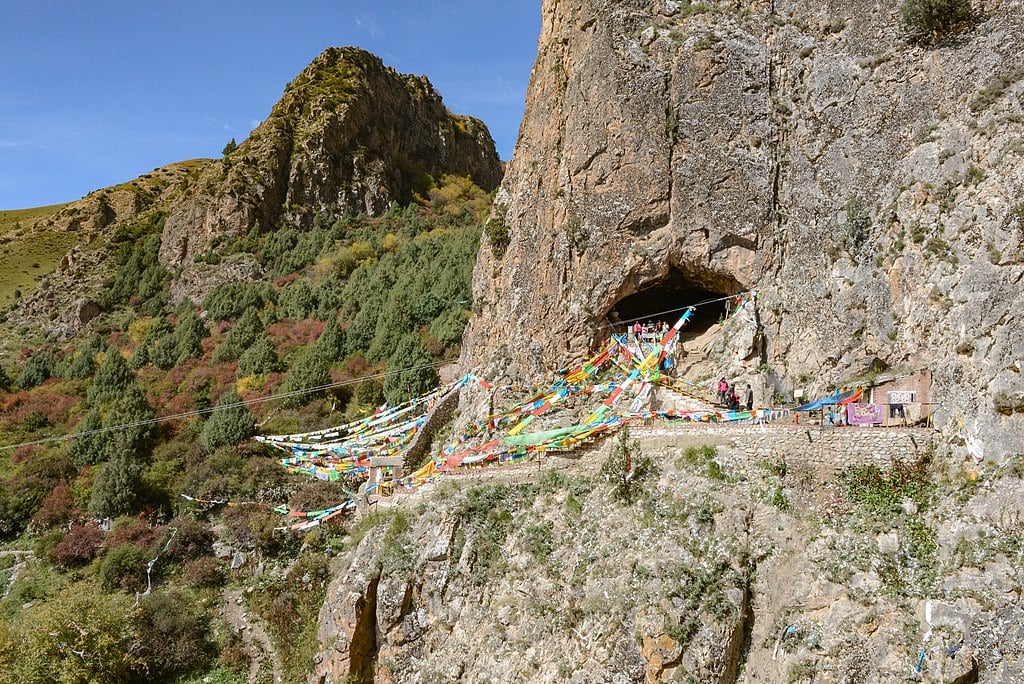Discovering Us
By Evan Hadingham
Senior Science Editor, NOVA
Author of Discovering Us: 50 Great Discoveries in Human Origins

In 1980, a Buddhist monk climbed up to Baishiya Karst Cave, sat to pray, and found half of a massive human jawbone with two huge molars lying on the floor. The cave is at nearly 11,000 feet on the edge of the Tibetan Plateau, often called the “Roof of the World.” Such high-altitude landscapes were among the last places on Earth colonized by our ancient ancestors. One serious obstacle was hypoxia, or mountain sickness caused by lack of oxygen, which stimulates the overproduction of red blood cells. Even in acclimatized populations today, it can lead to hypertension, stroke, and death. Yet hypoxia was seemingly no deterrent for ancient hunters who visited Baishiya cave over 160,000 years ago and left behind stone tools, animal bones, and the massive jawbone.
Neglected for decades in a storeroom at Lanzhou University in China, the jaw was finally studied by archaeologist Dongju Zhang in 2010. No DNA had survived, but biologist Frido Welker, supported by The Leakey Foundation, applied a novel technique and successfully extracted collagen, a common protein, from the jawbone’s teeth. The ancient protein matched samples from human bone fragments unearthed at Denisova Cave, over a thousand miles away in Siberia’s Altai Mountains. Here, in 2010, one such fragment led to the astonishing discovery of the Denisovans, a previously unknown, extinct side-branch of humanity. Denisovan DNA sequences have now been detected in living populations today over a wide area of central and southeast Asia, including the forbidding high-altitude Tibetan plateau. How did their ancestors survive in that harsh environment?
As humans first ventured into Earth’s high places, each population developed their own special genetic adaptations to cope with the hazards of hypoxia. In the Himalayas, one of these adaptations known as EPAS1 reduces the risk of acute mountain sickness by preventing the harmful overproduction of red blood cells. A recent study of today’s Han Chinese people showed that EPAS1 originated in those distinctive Denisovan DNA sequences. The evidence suggests that the Denisovans interbred with the ancestors of today’s Tibetans and Han Chinese somewhere in Asia and passed on their EPAS1 gene. Its helpful effect on red blood cell production meant that it was favored by natural selection and is now found in 78% of Tibetans today.
As well as helping to solve the enigma of how humans colonized the world’s most forbidding landscapes, studies of similar high-altitude genes are opening up new possibilities for treating circulatory diseases that threaten millions today.
This essay is adapted from the book Discovering Us: 50 Great Discoveries in Human Origins, now available to order from PBS.